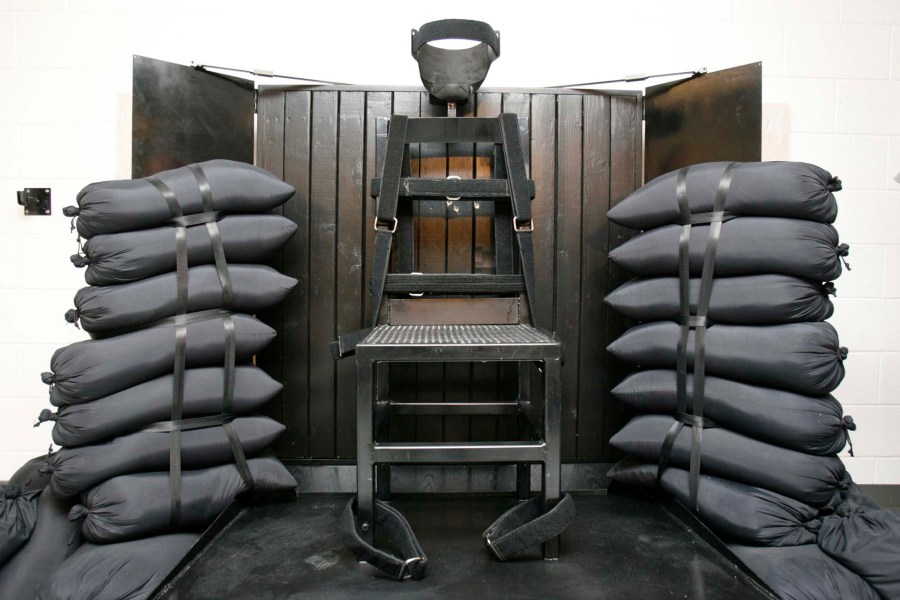Could Kohberger be spared death penalty since Idaho adopted firing squads?
- Idaho allows a firing squad if lethal injection drugs aren't available
- A law expert told NewsNation firing squads aren't what people imagine
- However, the possibility could still sway jurors in the case
Testing on staging11
(NewsNation) — Prosecutors are seeking the death penalty for Bryan Kohberger, who is accused of killing four college students in Idaho. But while considering the case and, if found guilty, his punishment, jurors may also consider the fact that the death penalty could now be carried out by firing squad.
Idaho Gov. Brad Little signed a law in March 2023 that would allow the Idaho Department of Corrections to carry out the death penalty via firing squad if lethal injection is unavailable.
Pharmaceutical companies that make the drugs used in lethal injections have begun to ban the use of the drugs for that purpose, leaving states to seek alternatives. Some have experimented with different cocktails of drugs for lethal injection or revived older methods of execution like electric chairs and firing squads.
While the phrase “firing squad” can conjure up frightening images, Fordham University law professor Deborah Denno told NewsNation it’s not as grisly as people might think. Prisoners shot in the heart would actually die more quickly than those killed by other means.
“Heart deaths, according to an experiment that was done in Utah in 1938, should occur within a minute, or under a minute, which is going faster than any other method of execution currently,” she said.
Denno said cases of lethal injection that didn’t go as planned have resulted in much more suffering.
“In the case of Rommel Broom in Ohio, he actually survived over two hours at a lethal injection execution. They were poking him all over his body to try to kill him,” she explained. “It was basically a slow slaughter, and they never succeeded, but he was in an enormous amount of pain.”
Broom’s execution was rescheduled after the botched attempt, but he died of COVID-19 before it could be carried out.
Denno explains that modern firing squads would work in a specific way, with an inmate strapped to a chair and surrounded by sandbags to prevent ricocheting bullets. Five shooters would be shooting from behind a wall through a small opening. Prisoners would be shot in the chest, with the shooters aiming for the heart.
“When you think of the individuals who are doing this, they’re experts,” Denno said. “Usually, they choose people who might be former police officers, somebody who’s very familiar with shooting, and they put a target on the inmate’s heart.”

“Historically, you would see who the executioner is,” she explained. “The inmate would be tied to a chair, and it would be a public execution.”
That’s no longer necessary, she said, because modern executions allow the identity of executioners to be kept secret unless they choose to disclose their involvement.
Firing squads could also make it easier to find executioners, Denno said, because people trained to be that skilled with firearms have likely also been trained to kill and are more emotionally prepared to take on the role.
For jurors, however, the mental images conjured up by the words “firing squad” may influence whether they think Kohberger should get the death penalty or life without parole.
“If they thought that, if they gave Brian Kohberger the death penalty, he was going to get the firing squad, they may be horrified by something like that, or they may think that that’s well-deserved,” Denno said. “The firing squad does not have a very good reputation in this country.”
If they do agree with prosecutors, it could still be some time before Idaho has the facilities necessary to carry out execution by firing squad.
In Idaho, it will cost $750,000 to renovate a cell block into an area suitable for use by firing squads, with some of the costs due to a mandatory area for witnesses to observe an execution.
According to the Idaho Department of Corrections, the state is still in the design phase of that effort, with no set timeline for completing the facility.
Previously, Idaho carried out executions by lethal injection alone. The state has executed three people since 1976 and has eight inmates on death row, seven men and one woman.
